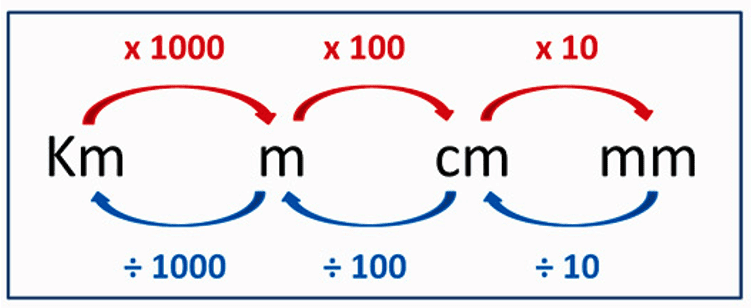In this post
We will begin by trying to understand the way in which length and distance are calculated and in what units. These things are usually measured in units of centimetres and metres, but you may sometimes come across questions that require measurements in miles, hectares and other such distances. If this does happen, you should be told of the conversion rates between two measurements, however, you need to know how to convert between centimetres, metres and other units directly related to these.

The picture above shows the conversion between the different metric measurements for length. Basically, what you need to know is listed below:
1) There are 10 millimetres (mm) in a centimetre (cm)
2) There are 100 centimetres in a metre (m)
3) There are a 1000 metres in a kilometre (km)
Using this conversion rate it is fairly simple to calculate different amounts of each unit when required.
Example
Convert the following:
a) 42m to cm
b) 86cm to mm
c) 3476m to km
d) 312mm to m
a) To change 42m to cm we must multiply 42 by 100. Doing this we get an answer of \( 42 \times100=4200cm \)
b) There are 10mm in a cm, therefore 86 needs to be multiplied by 10 to get the answer of 860mm
c) Since there are 1000 metres in a kilometre, we can divide our number 3476 by 1000 to get the answer of 3.476km.
d) Here we must convert 312mm into cm first, which is done by dividing by 10 to 31.2cm. Now we can convert this value for cm into metres by dividing by 100, so we get an answer of 0.312m
Similar methods can be used for converting between units for such things as capacity, time and even speed.



